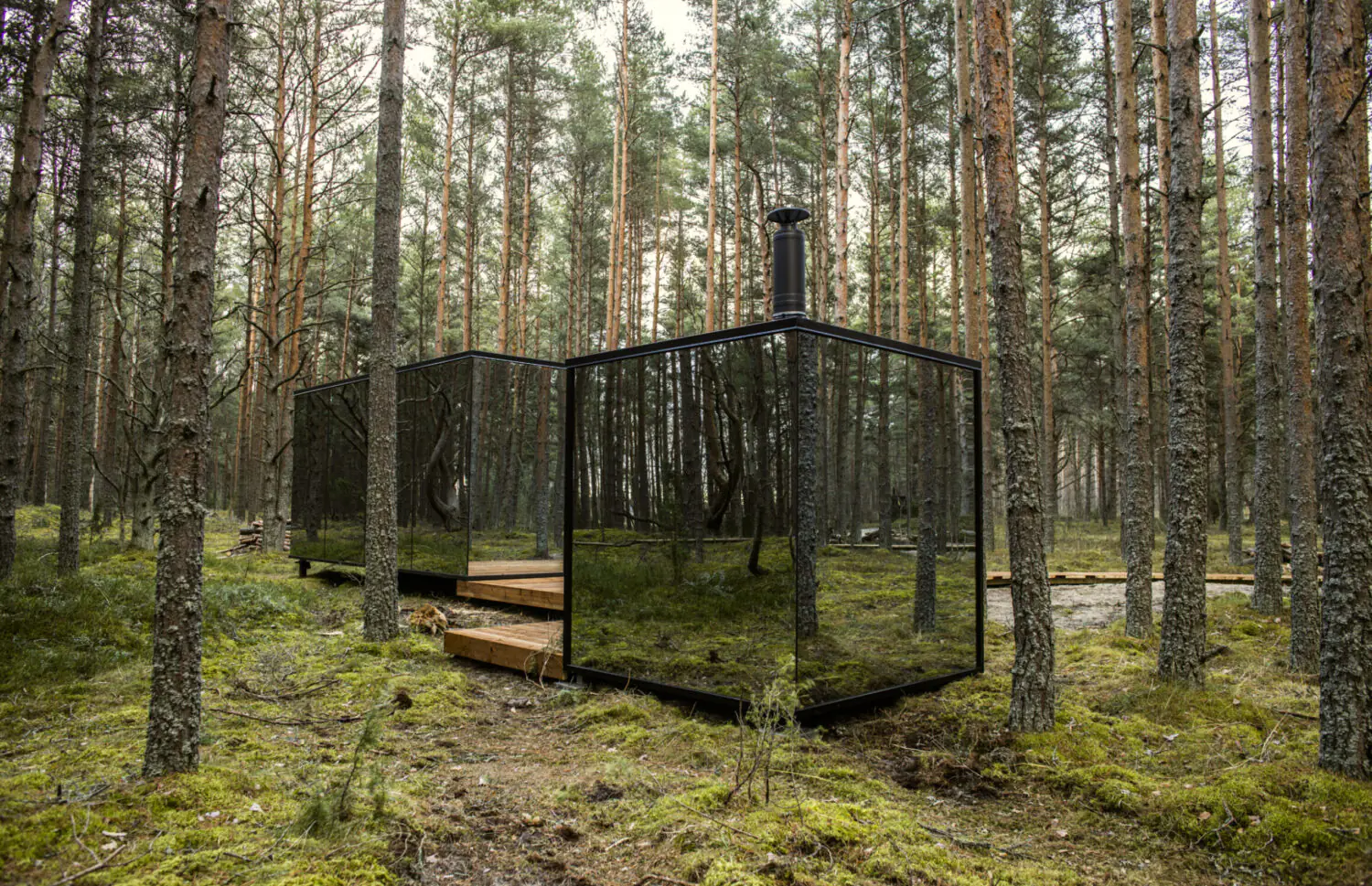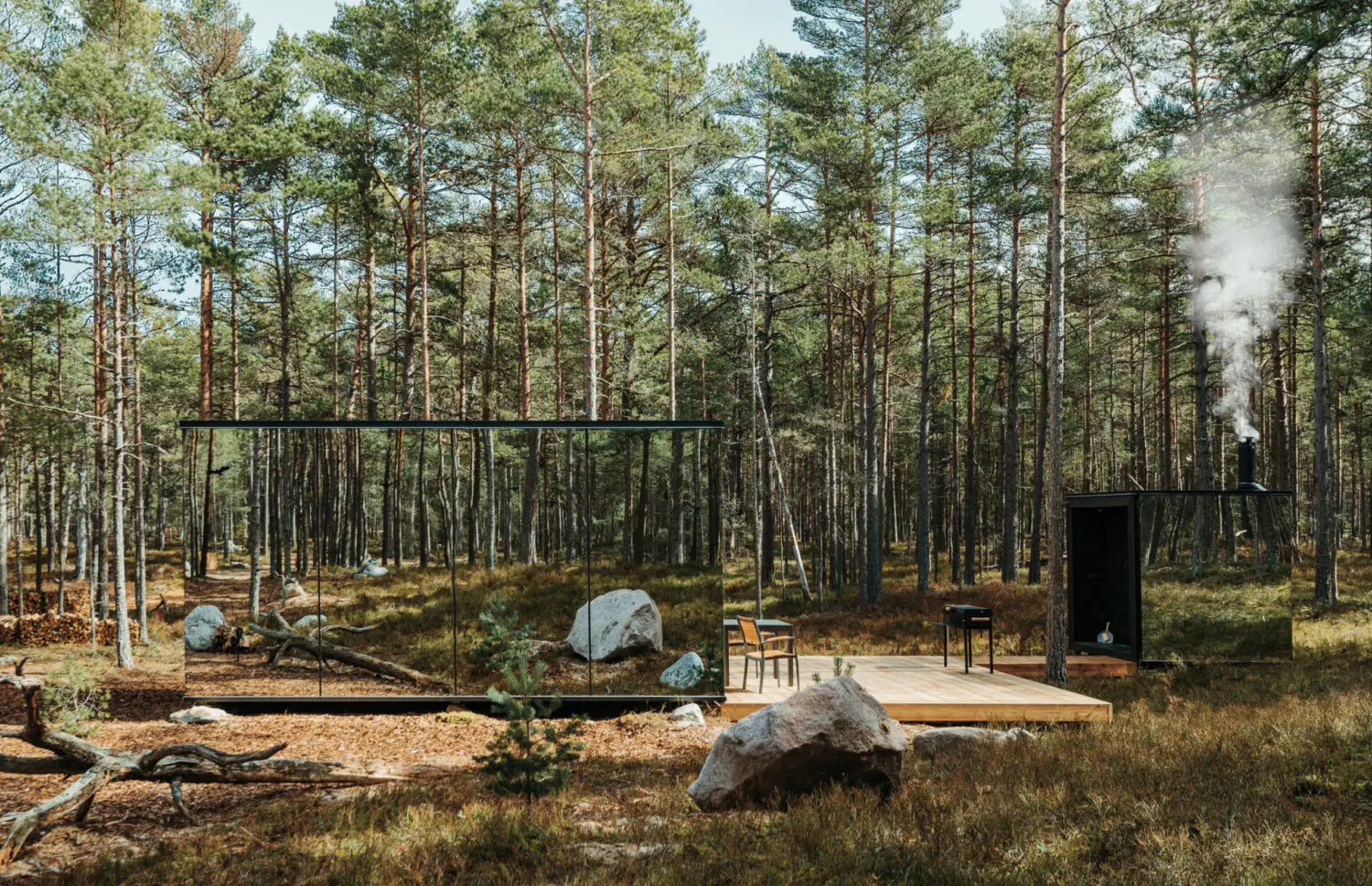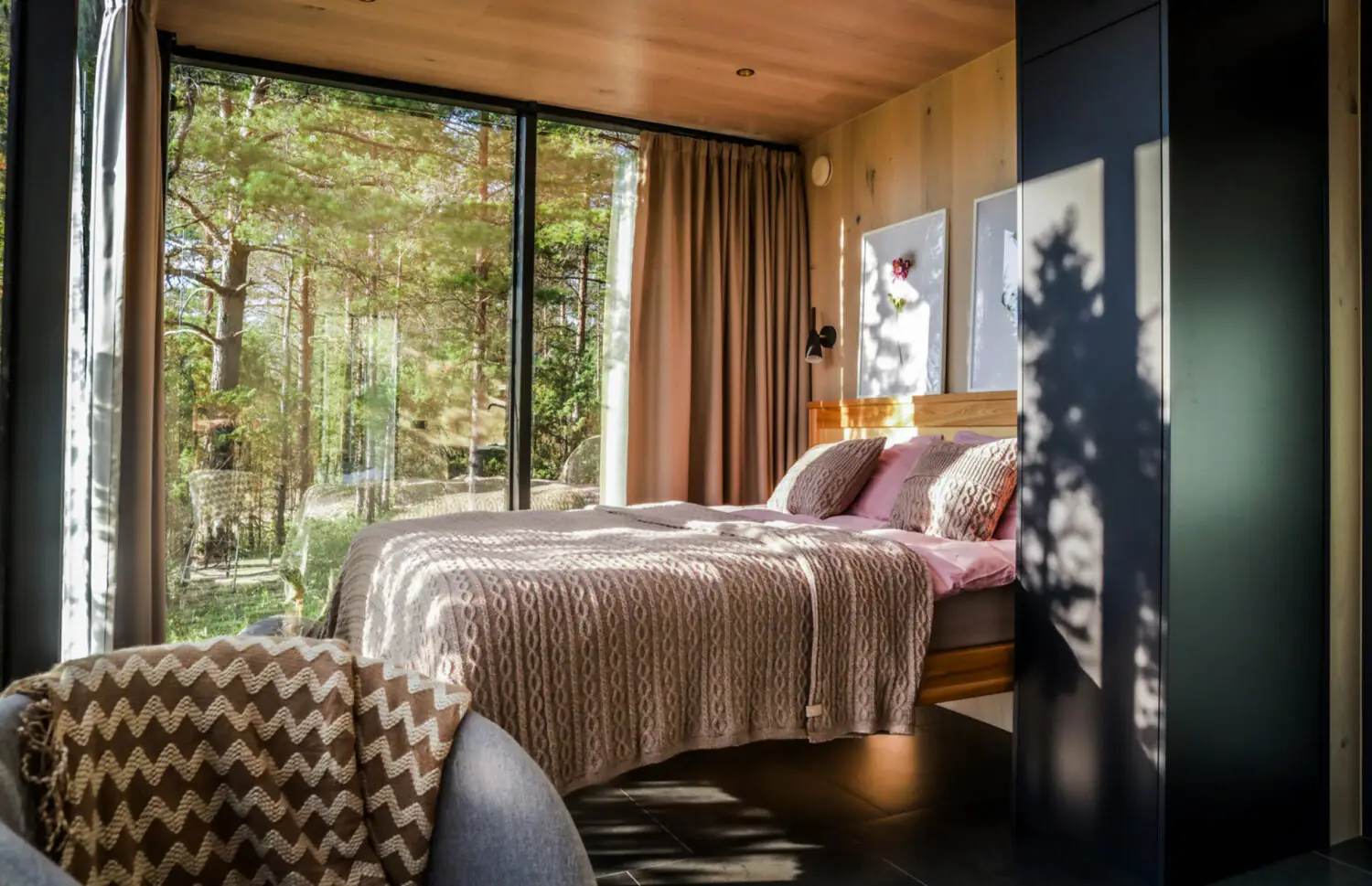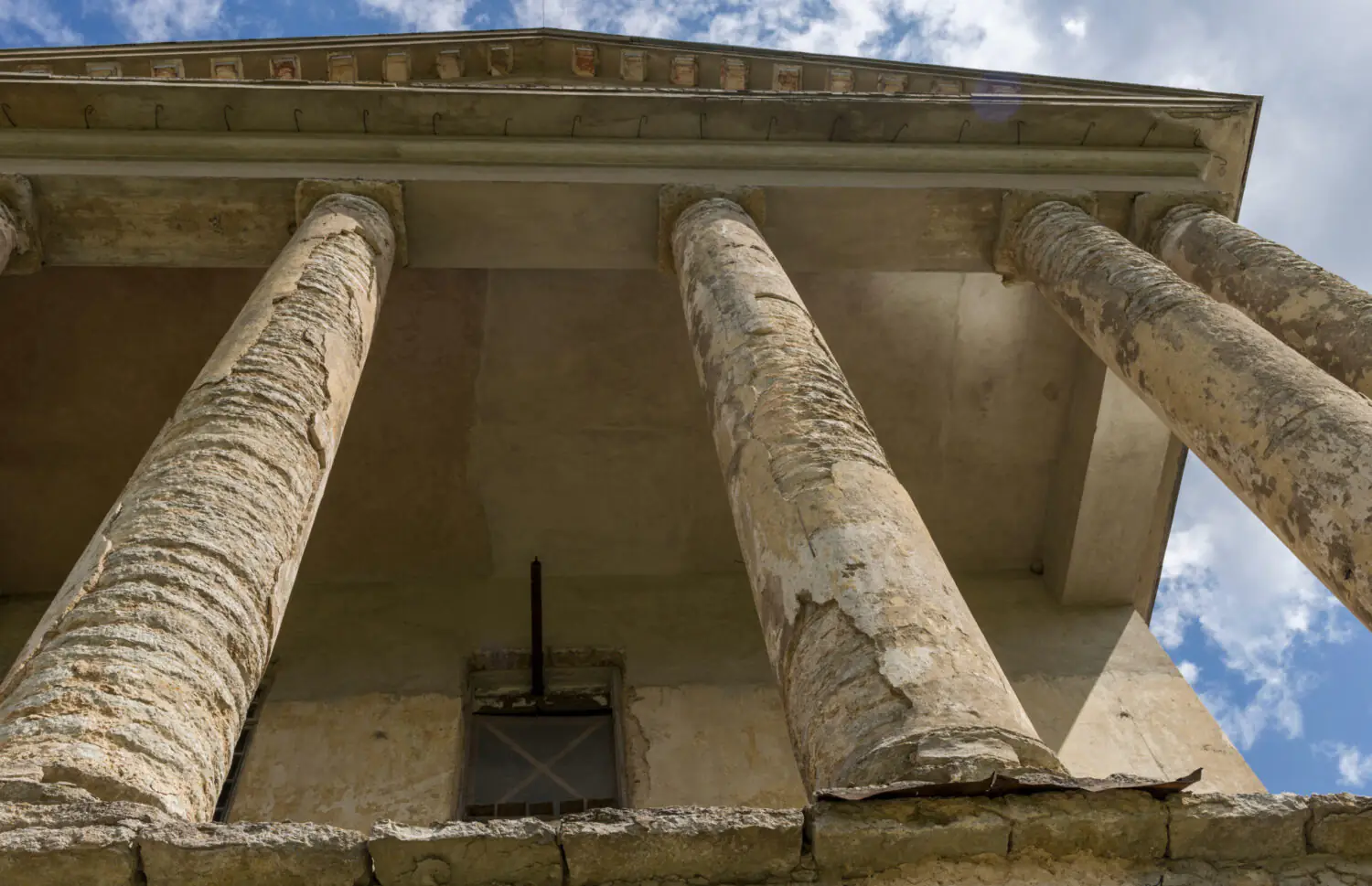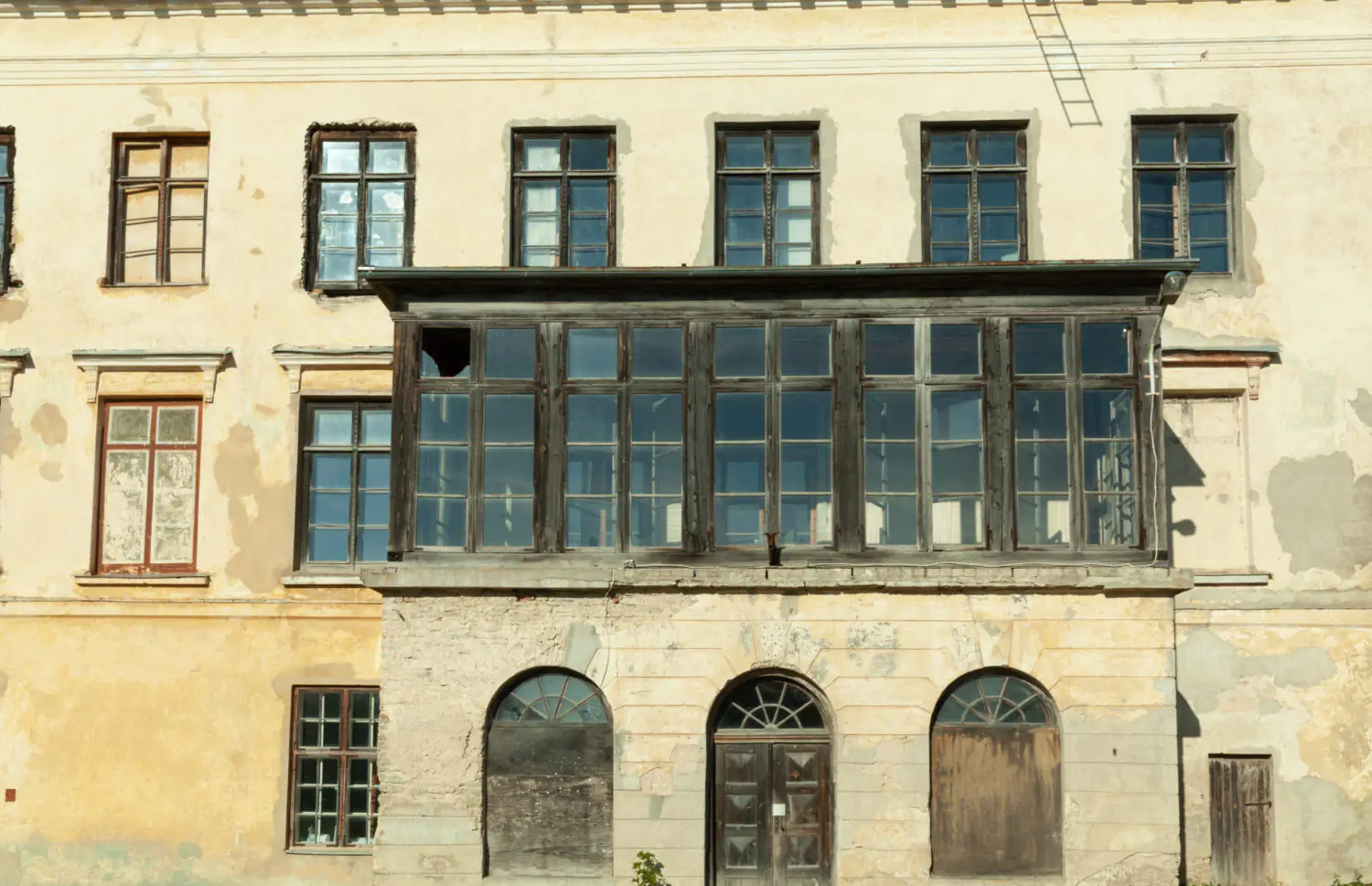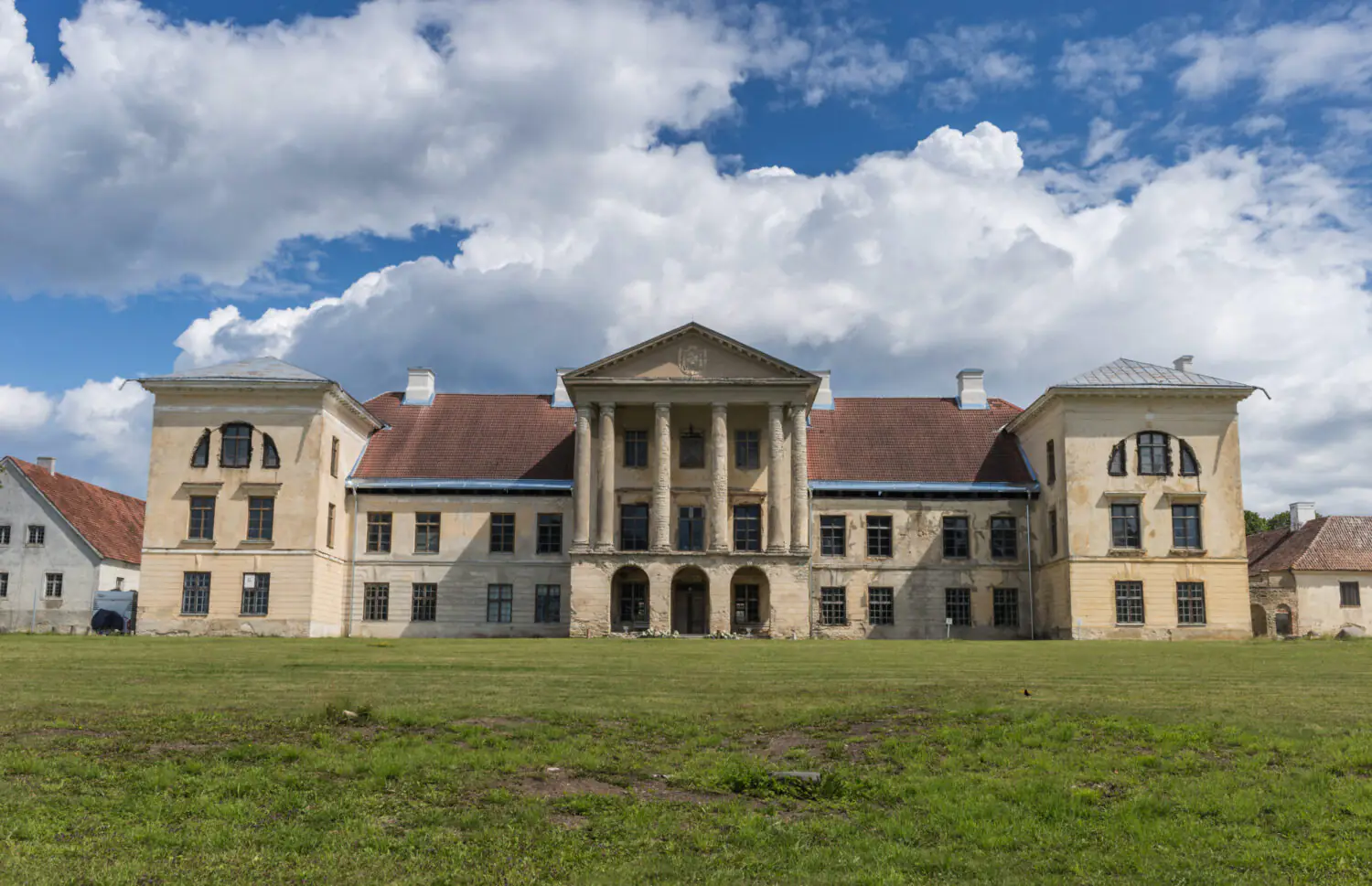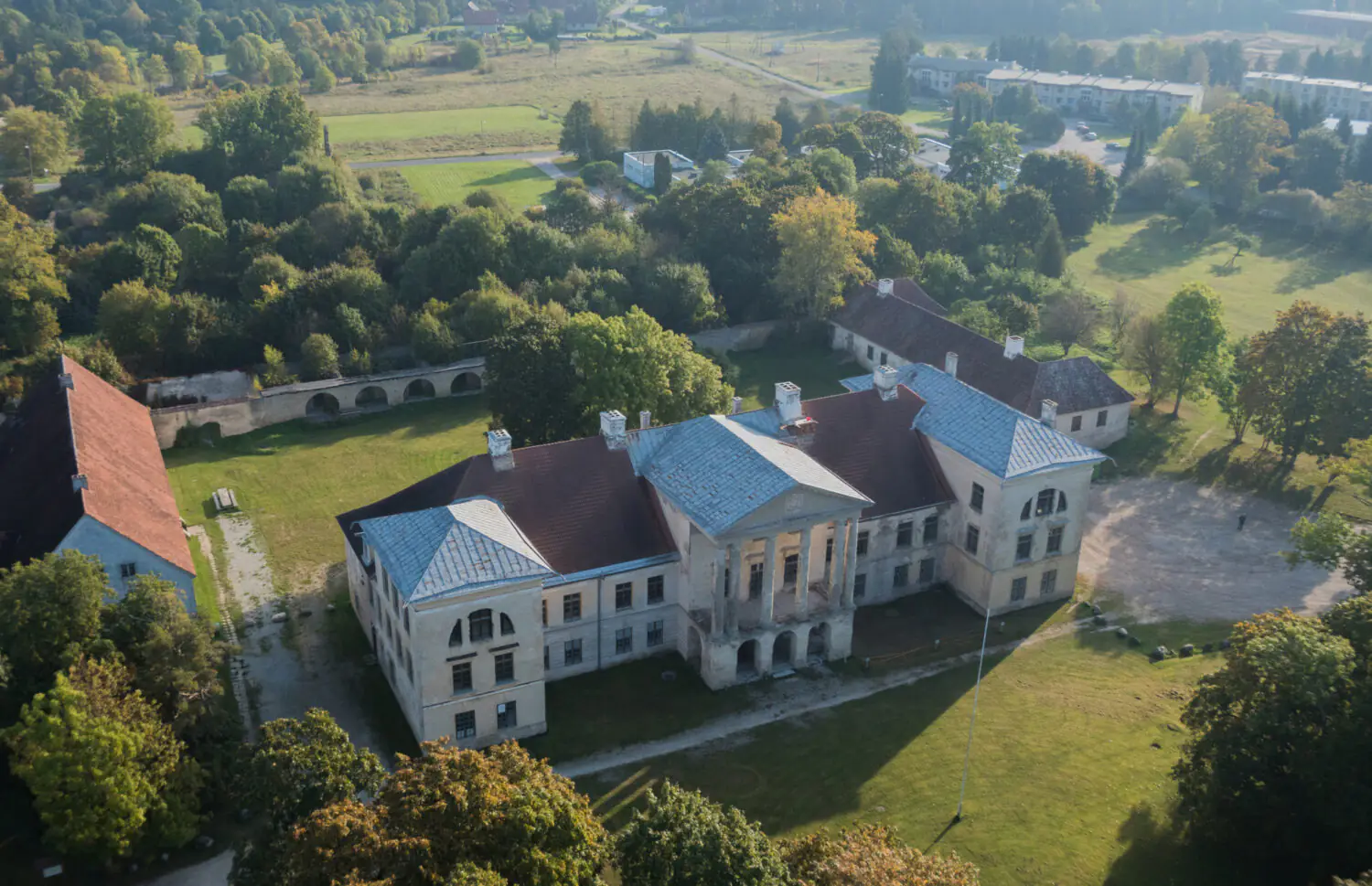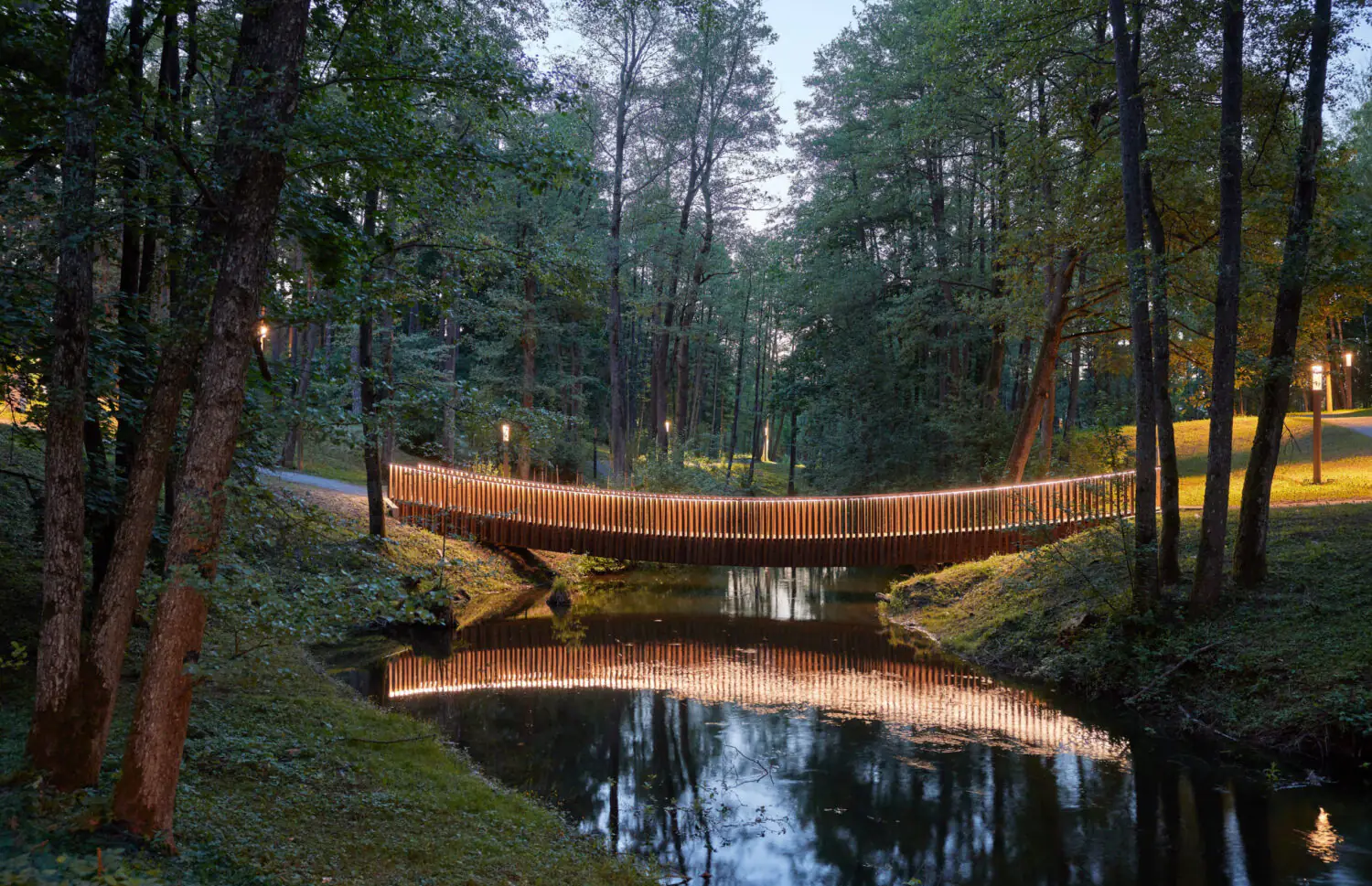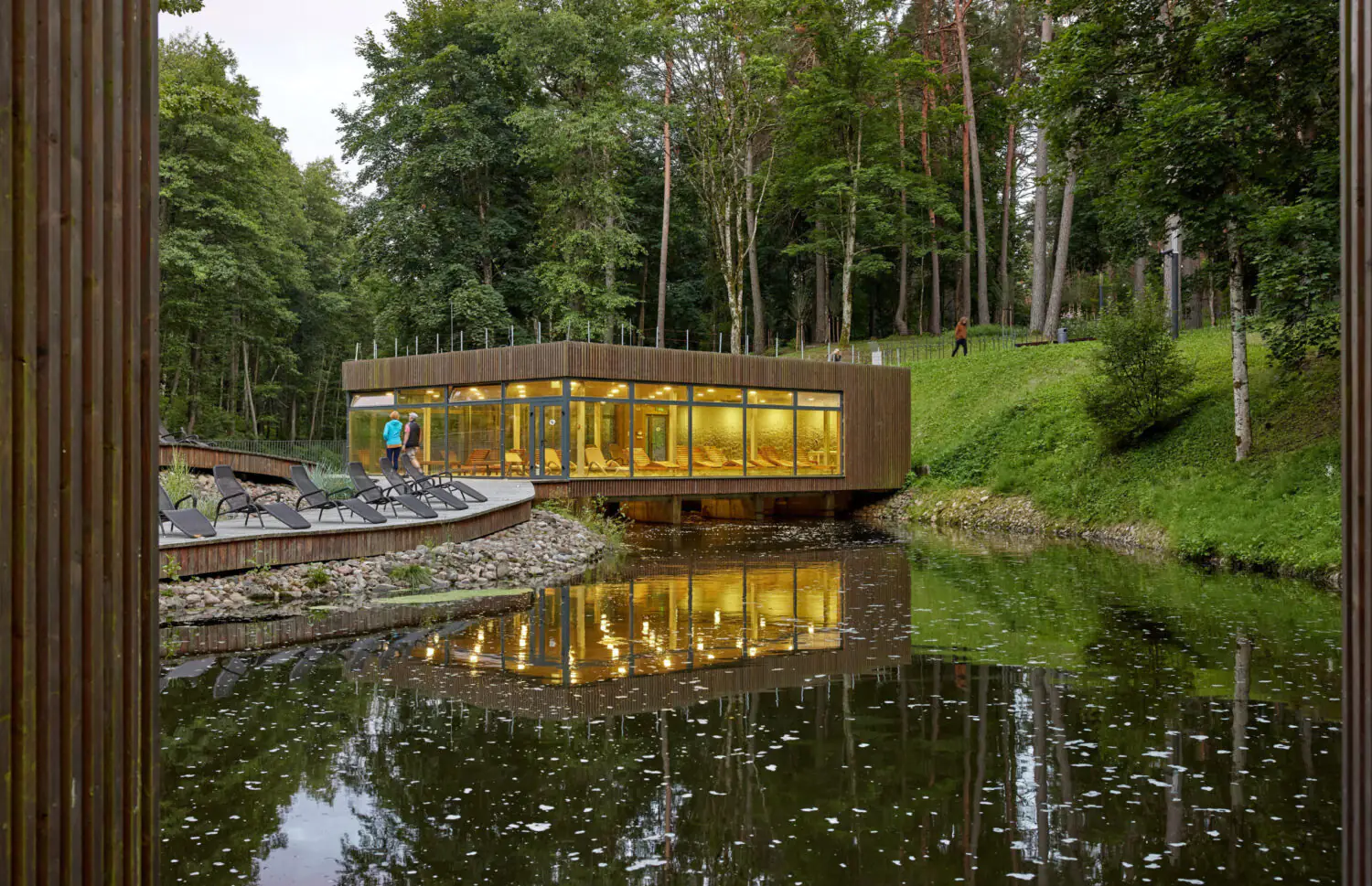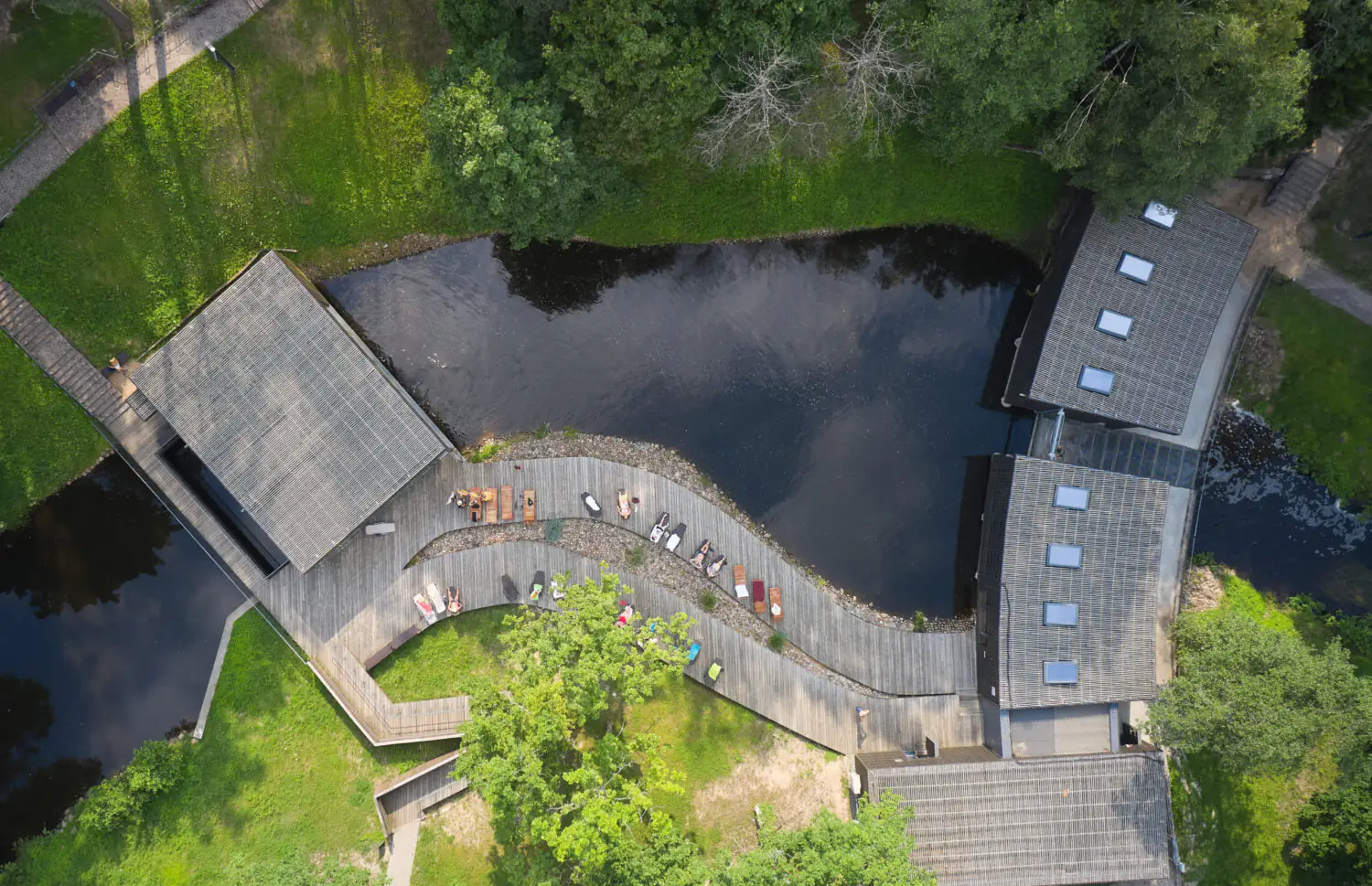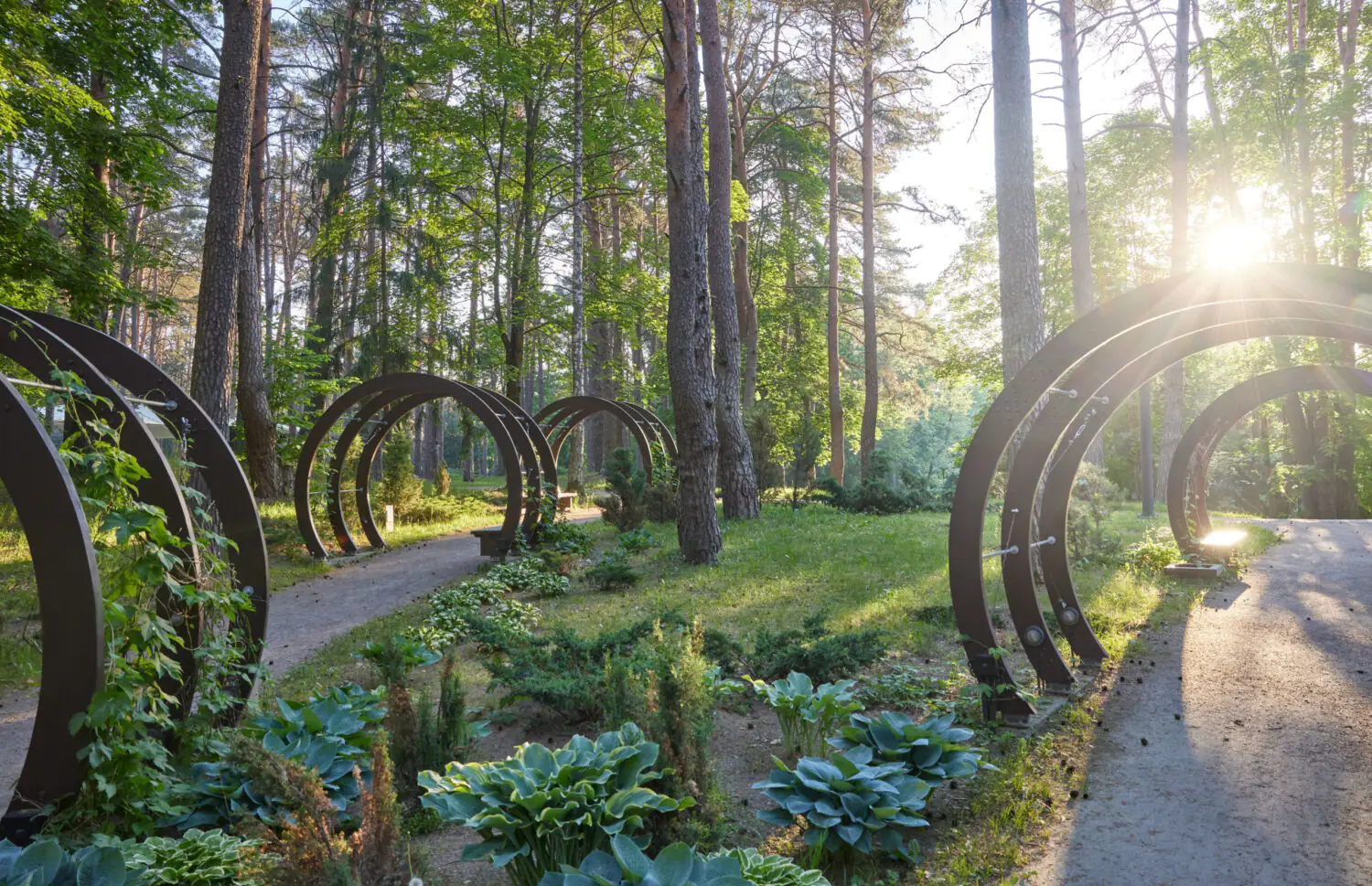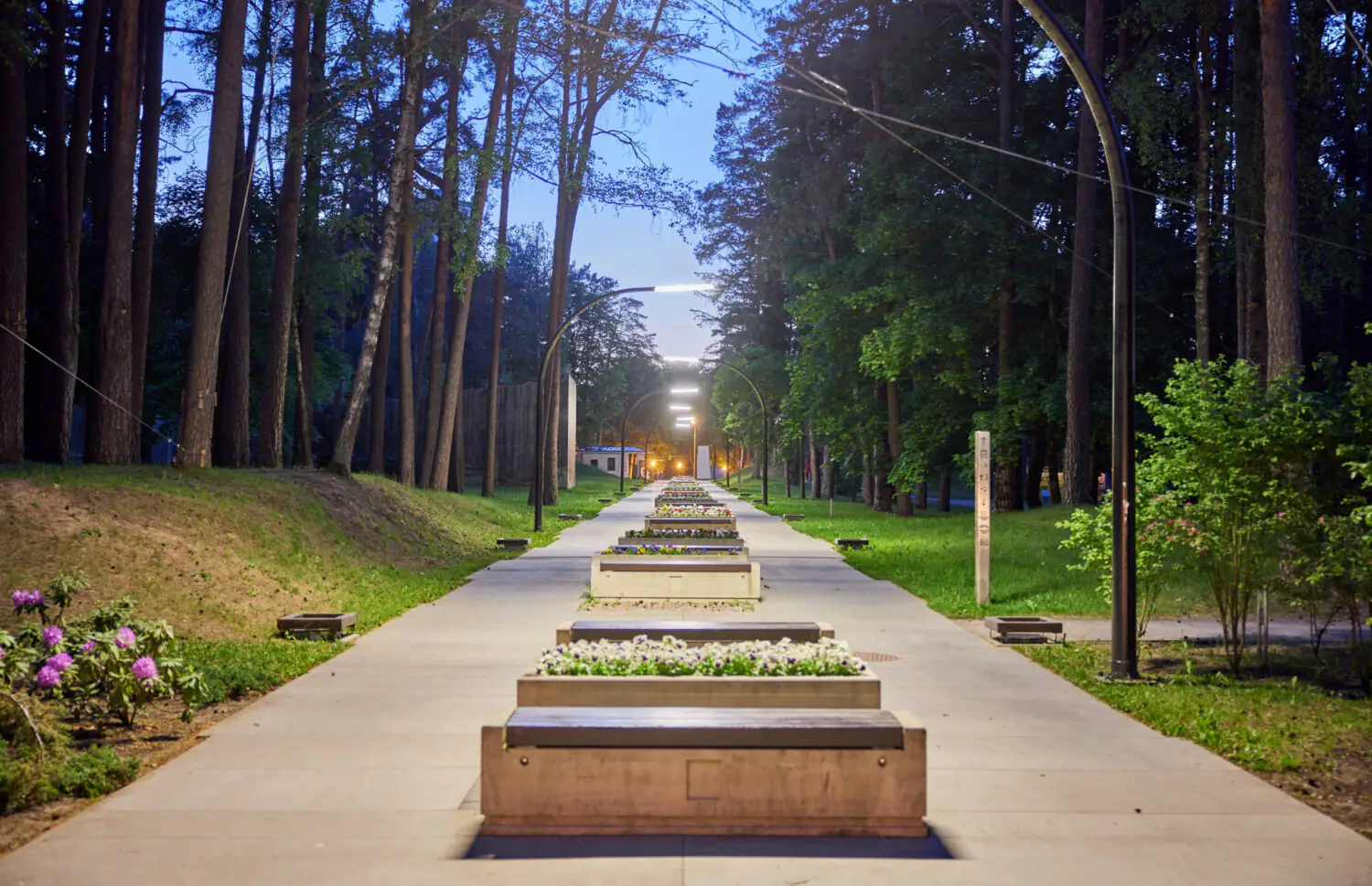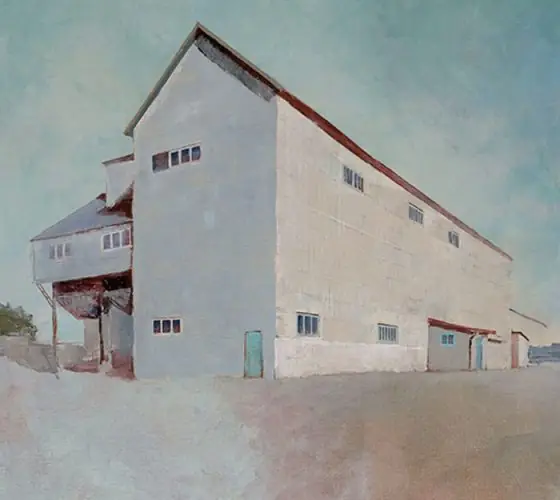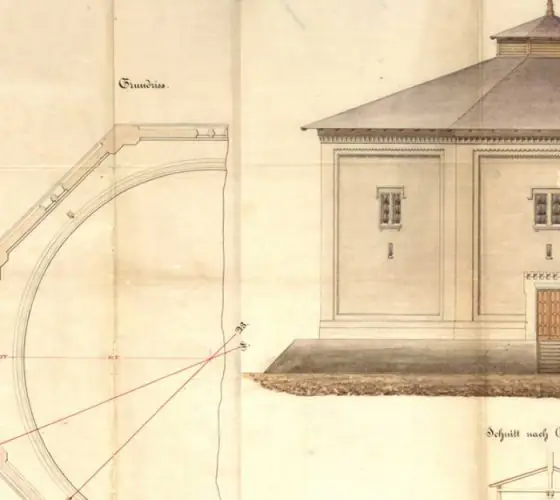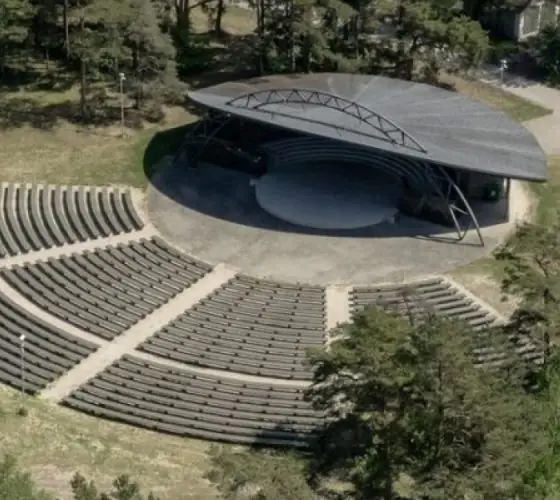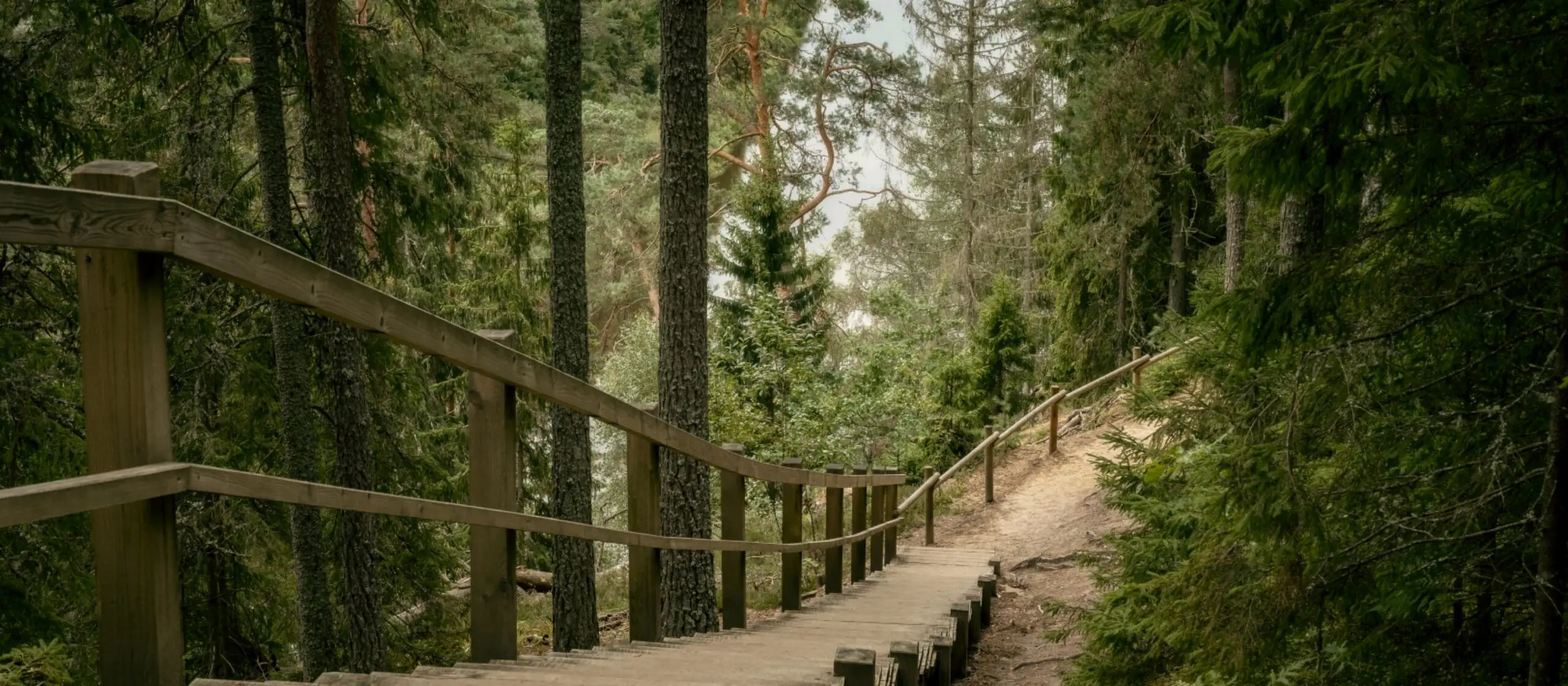
visit.valmiera.lv
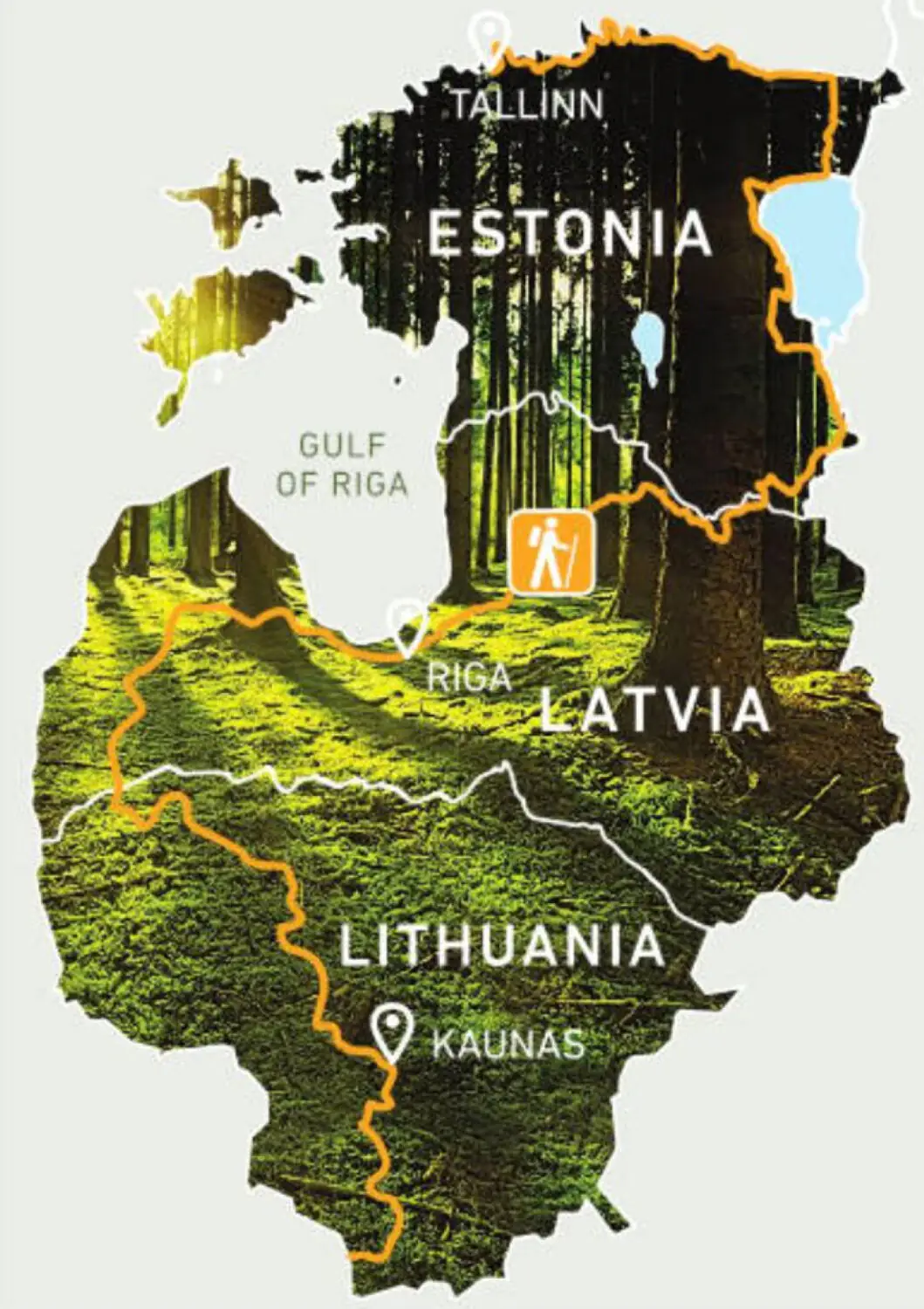
visit.valmiera.lv
Other name of the E11 is “Forest Trail”. It is approximately 4,700 kilometers long. The westernmost point of the route is the resort harbor Scheveningen in The Hague in the Netherlands, the easternmost point is Tallinn.
Read more about what to see on one of the oldest hiking trails in Europe in another article, and here you will find information about E11 architectural sights in the Baltic States.
Estonia
Place for walks: “Forest Library”
The “Forest Library” pavilions are created by b210 Architects, a young Estonian bureau that is participating in the current Venice Architecture Biennale. The concept came into being while working with 15 freshmen of the Interior Design Department at the Estonian Academy of Arts.
The pavilion was first assembled in Tallinn’s Old Town, and then two other similar structures were built. They were sent to the forest in Võru County, to the Pähni Nature Center. With the help of these pavilions, the forest can be “heard”: if you sit inside, the sounds of the surrounding nature become louder and clearer.
Address: Metsa kõlakojad, Tsooru-Krabi, Pähni, 66116 Võru maakond, Estonia
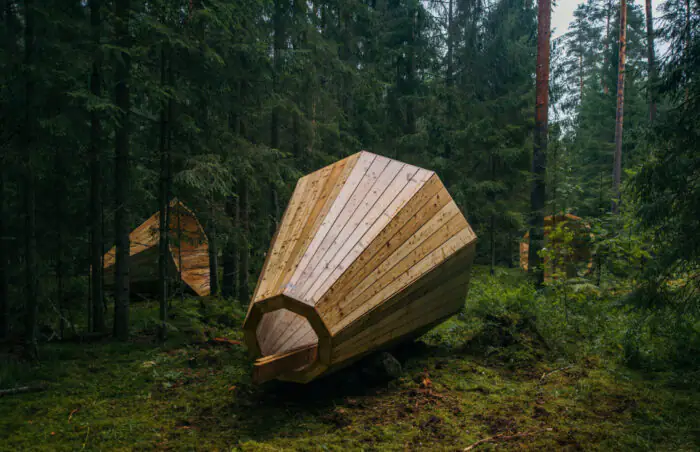
medium.com
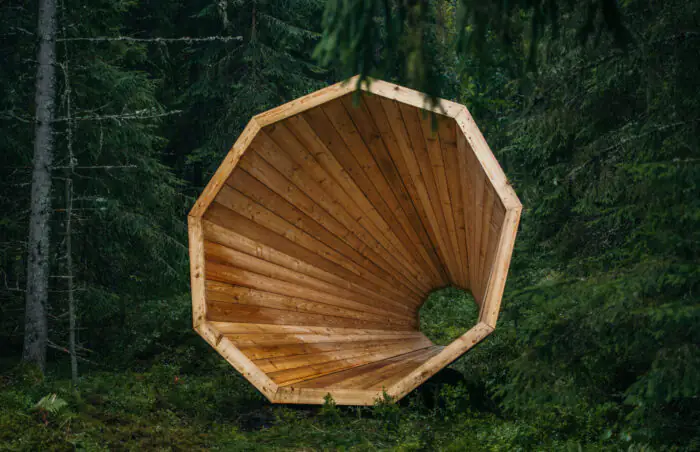
medium.com
Place of Remembrance: St. James Church
The first and only Lutheran church built in Estonia after World War II. The project was designed by architects Martin Aunin and Erkki Ristoja. The construction was dedicated to the 852 victims of the sinking of the MS Estonia, one of the most tragic events in the country’s modern history. Masses began in 2007.
The tower of the church has two bells with inscriptions: Memento Mori (“Remember Death”) and Memento Vivere (“Remember Life”).
Address: Nurme tee 2, Haabneeme, 74011 Harju maakond, Estonia
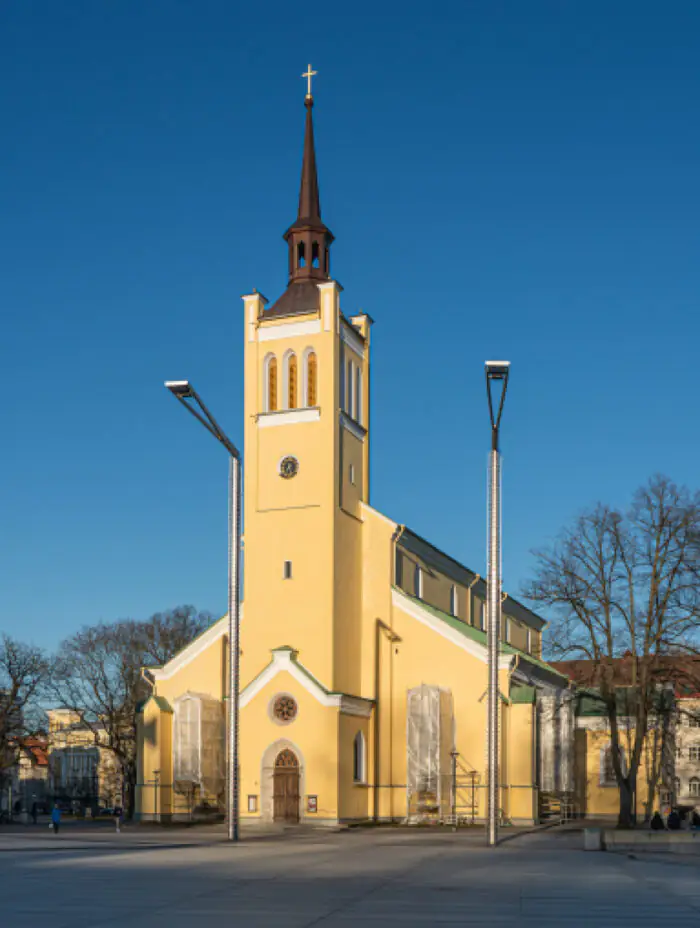
wikipedia.org
Holiday place: mirror houses ÖÖD Hötels
In 2023, the New York Times compiled the top 20 most unusual and luxurious vacation spots around the world. The first place went to the mirror houses of the Estonian company ÖÖD. Founded by brothers Jaak and Andreas Tiik, the essence of the project is the perfect fusion of architecture and nature, for which glass walls are most suitable.
The number of hotels doubles almost every year, and today the ÖÖD Hötels platform has 42 lodges in six countries. Half of them are in Estonia, including one in Tallinn, and another four in the north of the country along the E11 route.
A place with a long history: Kolga Castle
The majestic Kolga Manor with its former knight’s castle. It is the largest manor in Estonia and also one of the most mysterious. The ensemble was formed in the XVIII–XIX centuries. Time seems to have stopped here: many of the halls have been preserved, frescoes and parquettes show numerous traces of the past.
It is said that a wicked red-haired witch wanders around the house, biting men and causing them to die within a year. One of her victims was Carl Magnus Stenbock, the most famous clairvoyant of the Stenbock family who lived here.
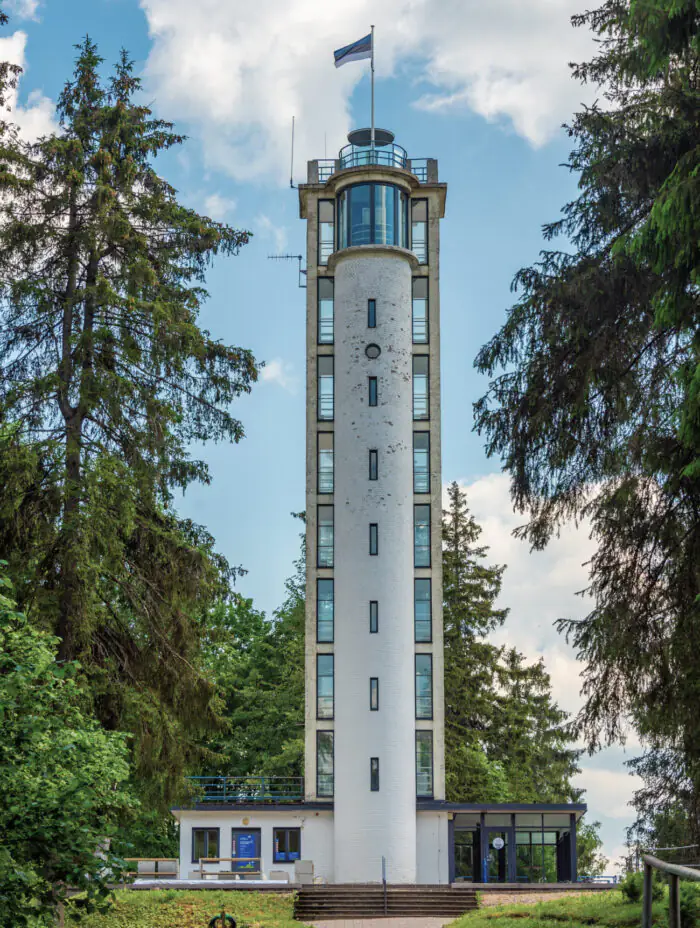
stock.adobe.com
Place at the top: Suur Munamägi Tower
This tower is the fifth on Estonia’s highest hill, Suur Munamägi (317 meters high). The first one appeared back in 1812, and is rumored to have been destroyed because it looked too much like a lighthouse and confused sailors navigating Lake Peipsi.
The tower was rebuilt in its present form in 1939. The first and the top floor are connected by an elevator, with a café below and a glazed observation deck above. Architect Karmo Tõra used functionalist approaches and reinforced concrete. For the young Estonian state, modernism was an important marker of independence. On fine days, it offers views up to 50 kilometers away.
Latvia
A place with a long history: Sigulda Castle
Sigulda Castle, originally known as Zegevold, was begun to be built in the XIII century for a German spiritual and knightly organization, which later became famous under the name of the Livonian Order.
Later, the New Sigulda Castle was added to the medieval fortress walls: today it is the symbol of Sigulda. The bizarre building with an octagonal tower and pseudo-Gothic battlements was designed by Latvian architect Janis Mengelis. The customer was Dmitri Kropotkin, cousin of anarchist Peter Kropotkin. Nowadays there are creative studios inside the New Castle: for example, the Viktora vēstules paper art workshop and the Balts jewelry workshop.
Address: Pils iela 16, Sigulda, Siguldas pilsēta, LV-2150, Latvia
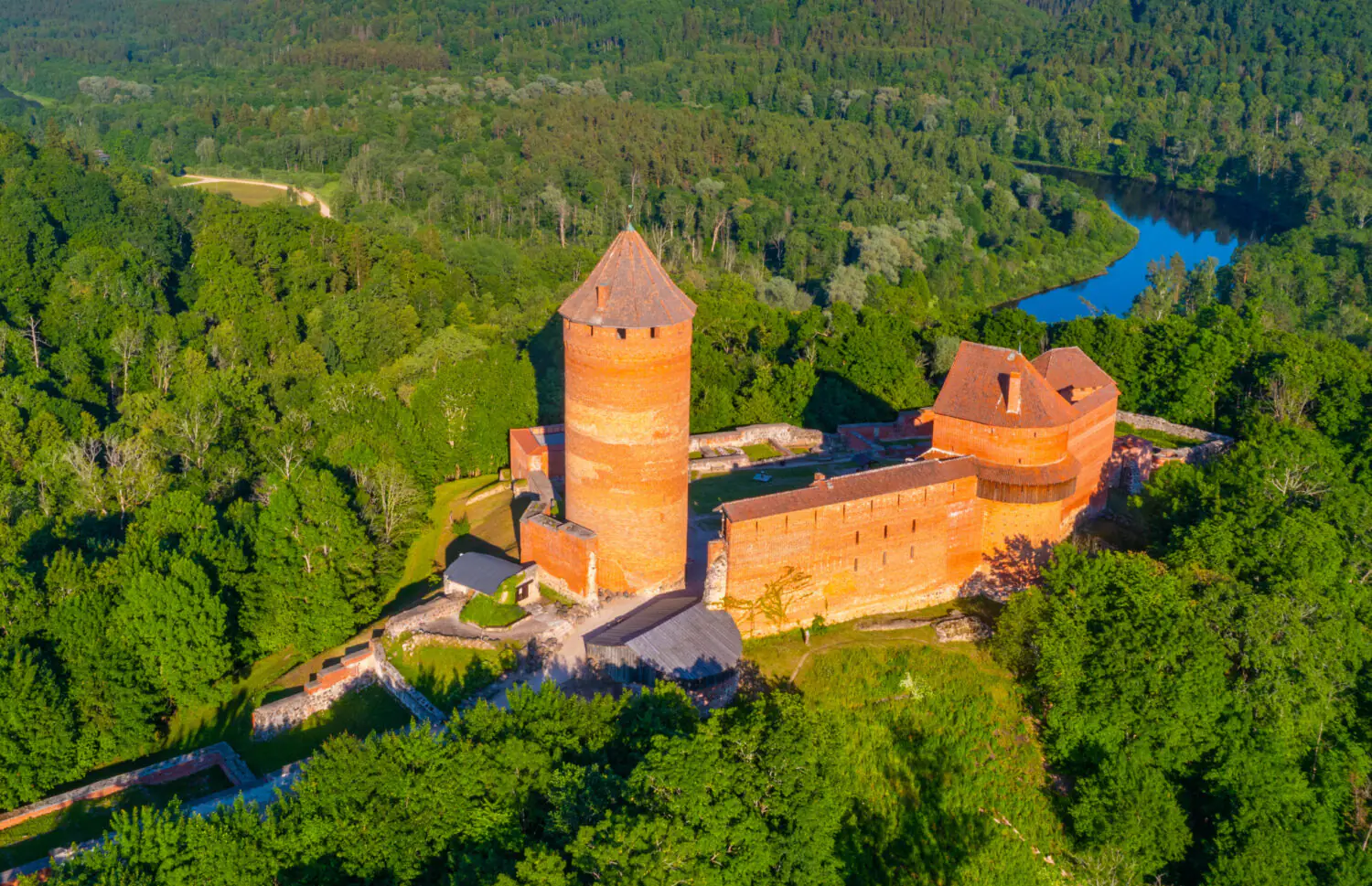
stock.adobe.com
Place of remembrance: Janis Lipke Museum
The Janis Lipke Museum in Riga’s Kipsala Island is an example of working with the tragic past through architecture. It is dedicated to the man who during World War II took Jews out of the ghetto on the opposite bank of the River Daugava, hid them in the basement of a shed and thus saved 57 people.
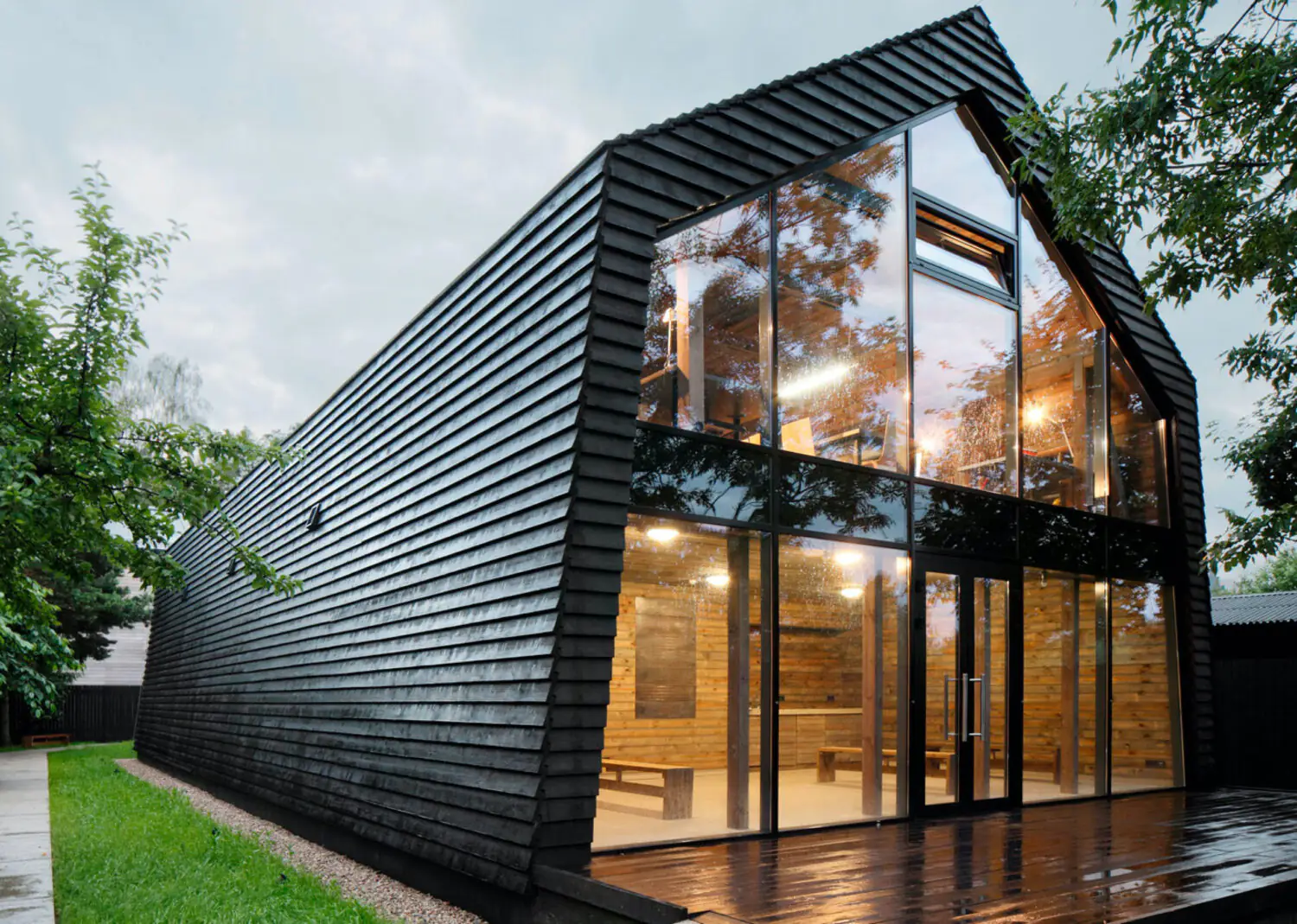
lipke.lv
Nothing remains of the building, it burned down in the 1980s. But when it was decided to immortalize the memory of Lipke, the architect Zaiga Gayle used the figure of a black (“blackened with soot”) shed with a cellar. At the very bottom is built a sukkah, a symbolic Jewish refuge, a promised home. Ten years ago, the project was nominated for the Mies van der Rohe Prize, Europe’s premier award for architecture.
Address: Mazais Balasta dambis 9, Kurzemes rajons, Rīga, LV-1048, Latvia
Place of leisure: Ziedlejas Spa and Wellness Resort
The spa center on the bank of the Gauja River is a project of the Latvian bureau Open AD, which specializes in minimalist architecture made of wood and other natural materials.
The complex includes two bathhouses and three detached lodges for overnight stays. Traditional gable-roofed rural dwelling forms are mixed with modern materials: the facades of the dwellings are covered with Corten steel, and the saunas have panoramic windows overlooking the forest and the hilly river banks. In 2021, the project was shortlisted for the Dezeen Awards in the hotel building category.
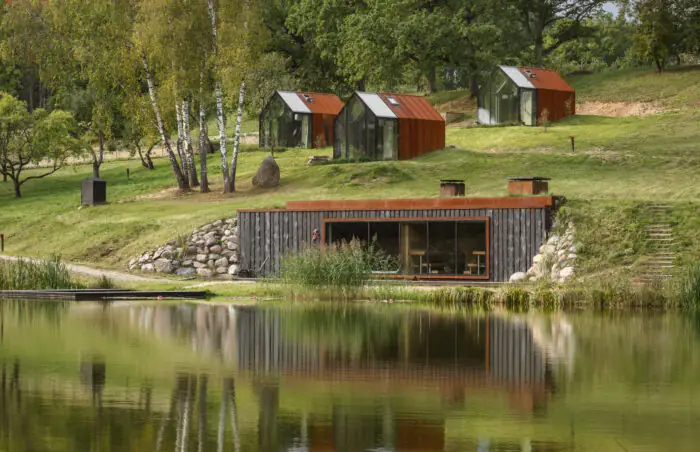
ziedlejas.lv

ziedlejas.lv
Meeting place: Sporta Pils dārzi
A public garden on the site of a vacant lot is a source of pride for the citizens of Riga and a popular place for picnics and meetings. In 2020, Renate Lagzdinja, a resident of Riga, agreed with the owner of the abandoned territory, launched a fundraising campaign together with like-minded people and arranged the garden beds: there are about 150 of them.
Read more about the history of this place in this material.
Address: Krišjāņa Barona iela 75, Centra rajons, Rīga, LV-1001, Latvia
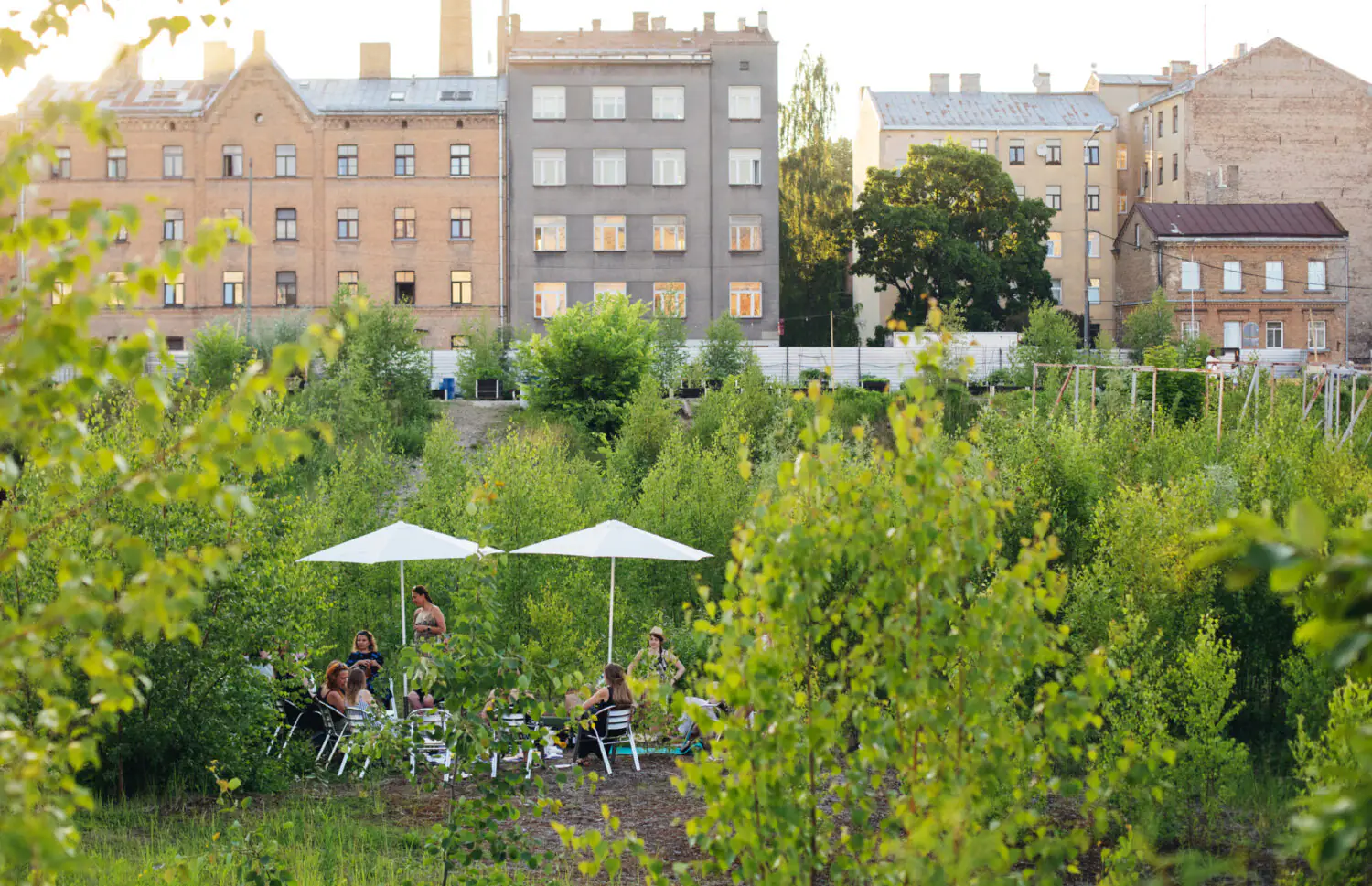
facebook.com/Sportapilsdarzi
A place among the pines: Dzintaru Forest Park Watchtower
In 2010, a 33.5 meter high observation tower appeared in Jurmala on the territory of Dzintari Forest Park. Its authors are the Latvian bureau ARHIS. The rectangular structure made of metal is lined with a permeable wooden shell. On fine days, the sun shines through the wooden slats, while at night the tower shines from inside like a huge forest lantern.
At the very top is a platform overlooking the sea, and scattered between it and the ground are twelve balconies where you can relax during the ascent and enjoy the view of the pine trees.
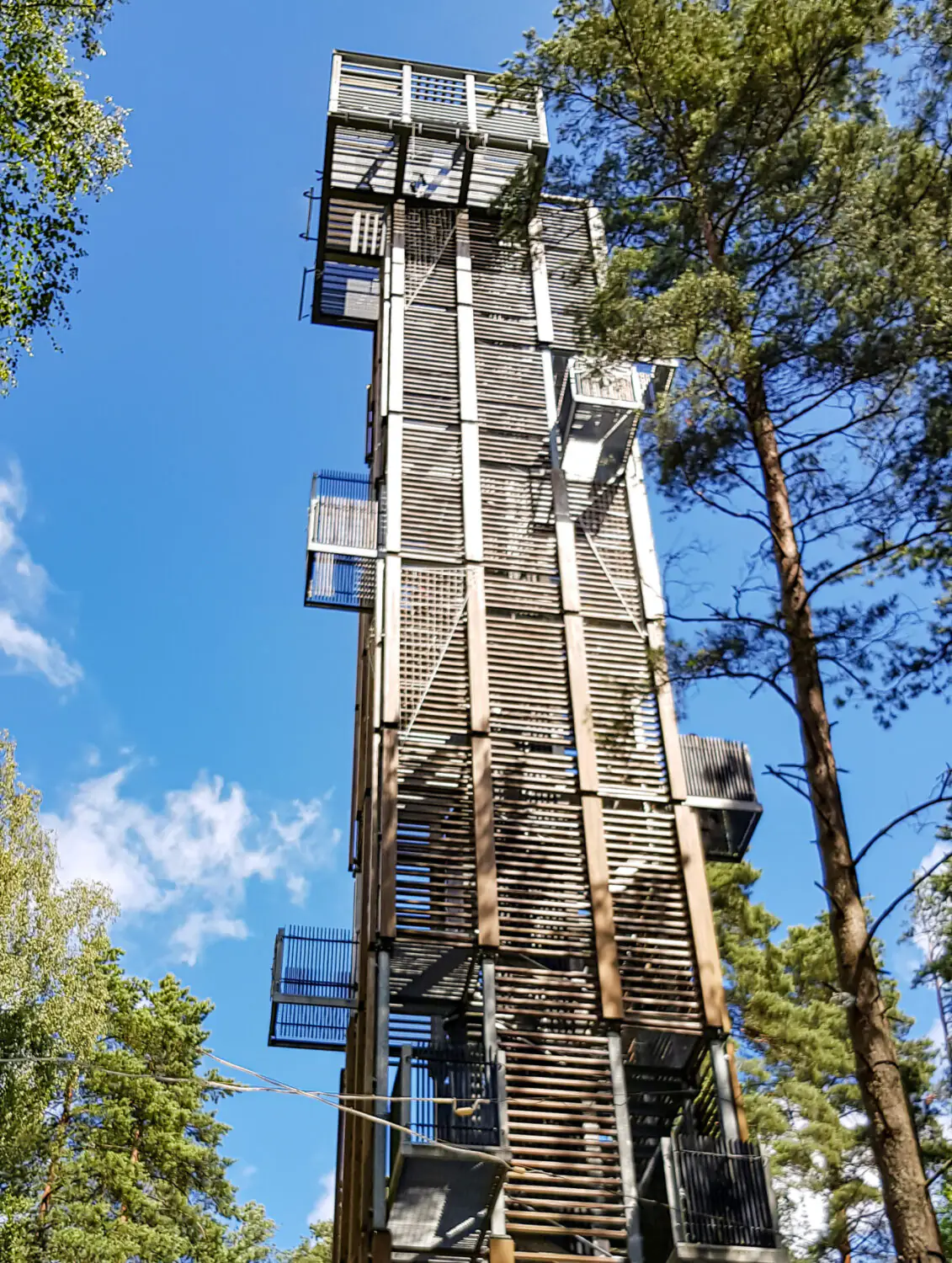
visitjurmala.lv
Lithuania
A place with a long history: Panemune Castle
The restored 17th century castle on the banks of the Neman River was originally owned by Hungarian nobleman Janusz Eperjes. It is one of the most beautiful Renaissance fortresses in Lithuania: with massive towers, cascading ponds and the remains of frescoes in the interiors (you should look for them in the southern part of the complex).
In 2021, after a 10-year restoration, exhibition halls with temporary exhibitions were opened here. The service wings house the creative residences of the Vilnius Art Academy (VDA).
Address: Panemunės, 74464 Pilis I

stock.adobe.com
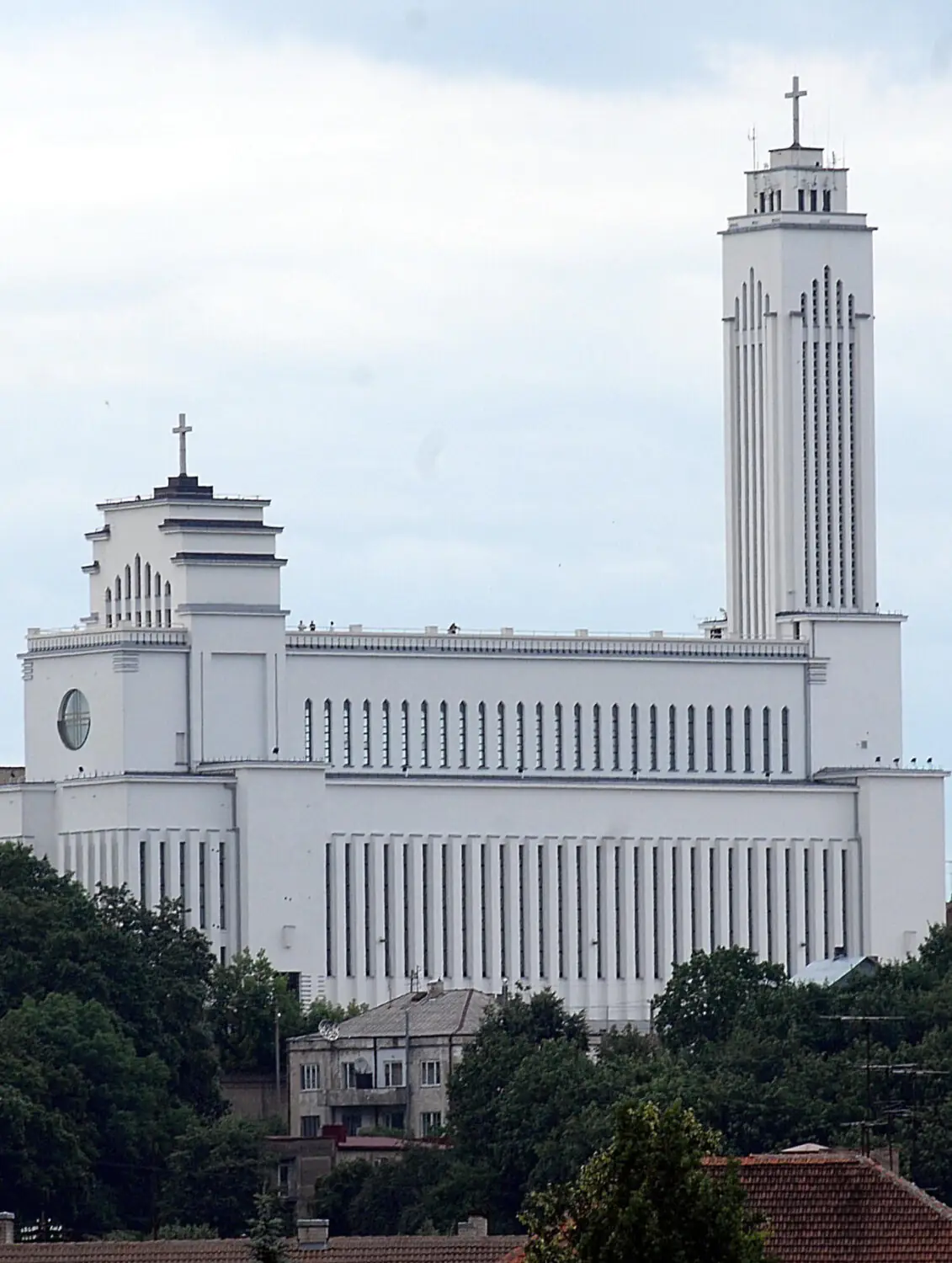
reddit.com
Place of Culture: Kaunas Modernism
Modernism was not a mass phenomenon in the 1920s and 1930s. Most commonly, individual buildings or neighborhoods appeared in cities. But in Kaunas, which became the Lithuanian capital for a short interwar period, modernist buildings formed a holistic environment.
There are about 6,000 buildings from the first half of the 20th century, including a Cathedral with a roof terrace, the former Central Post Office, a Mosque and many private residences. The most famous of them is the House of Jurgis and Aleksandra Iljinienės, which has been on tour since this year.
Here you can explore a map with the Kaunas’s main modernist sights.
Place to stay: Hotel Pušynas
This building in Druskininkai is an interesting example of Lithuanian postmodernism. It was originally the Surutis Sanatorium. Architects Romualdas Šilinskas and Napoleonas Kevišas gave the building a round organic shape, which, on the one hand, facilitated more light in the rooms and, on the other hand, gave a resemblance to a huge pine cone made of concrete. Later, the building was converted into the Pušynas Hotel, which means “Pine Forest”.
Address: Taikos g. 13, 66120 Druskininkai
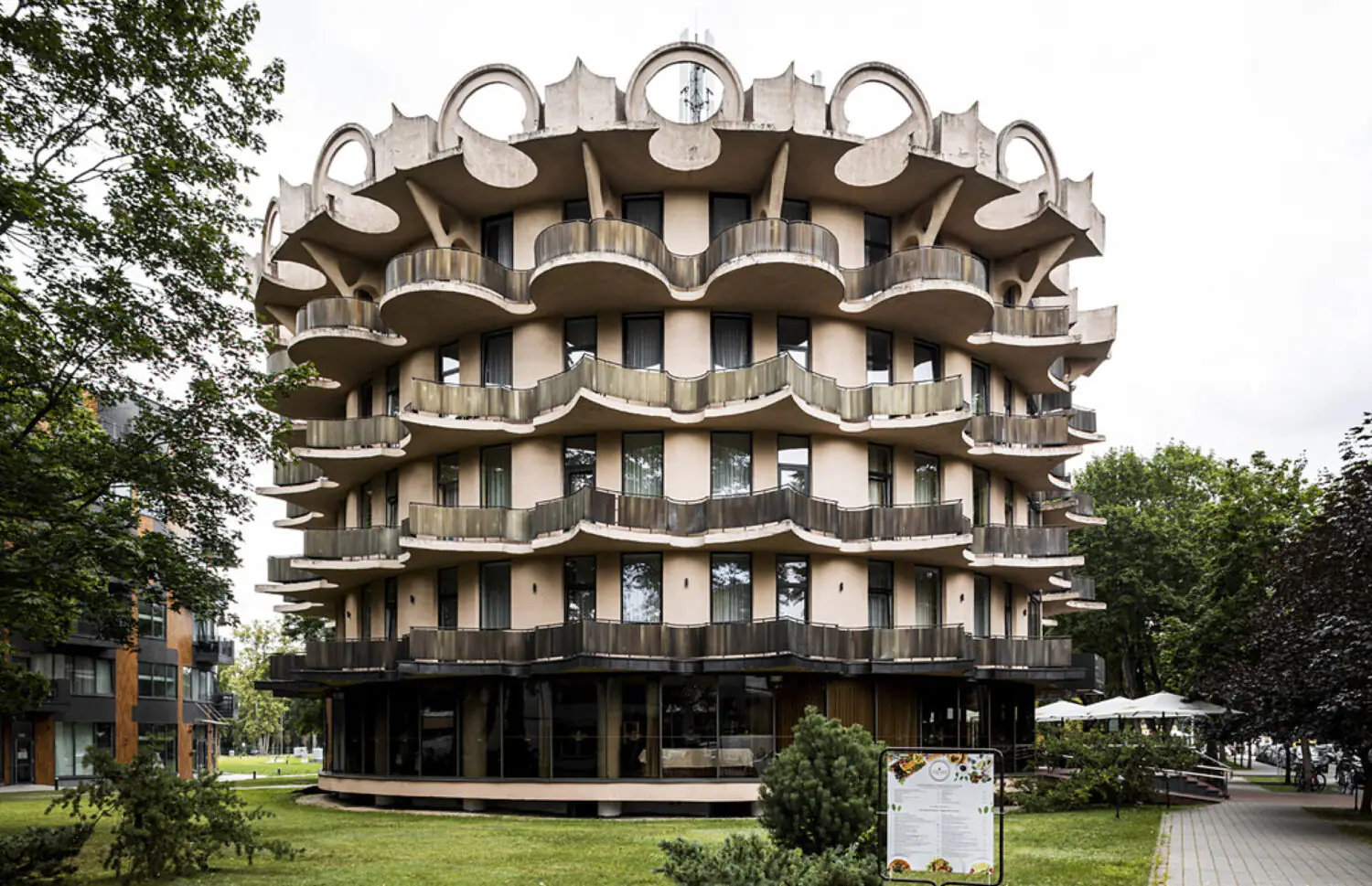
qantas.com
Place for walks: Dineika Wellness Park
The park, completely reconstructed in 2015, appeared 90 years earlier on the initiative of a young doctor, Evgenia Levitskaya. It was a small area for walking and sunbathing, which eventually grew into an impressive physical therapy park. Doctor Karolis Dineika, one of the main adherents of physical therapy, was appointed its head.
After the reconstruction designed by Vilniaus architektūros studija, the cascade pools were restored in the park, yoga areas were equipped, and sun loungers were placed.
Address: Sausoji g. 1, 66165 Druskininkai
Place above the cliff: Jurakalnis Observation Tower
The fifteen-meter high tower stands on the edge of a geological outcrop and the Jurakalnis spur, which dates back to the Jurassic period. From here you can see the Venta River valley and the town of Papile. And for fossil hunters, there’s a little bonus: even today, mollusk shells and other fossils can be found near the tower.
Address: 1011 85246 Papilė, Lithuania
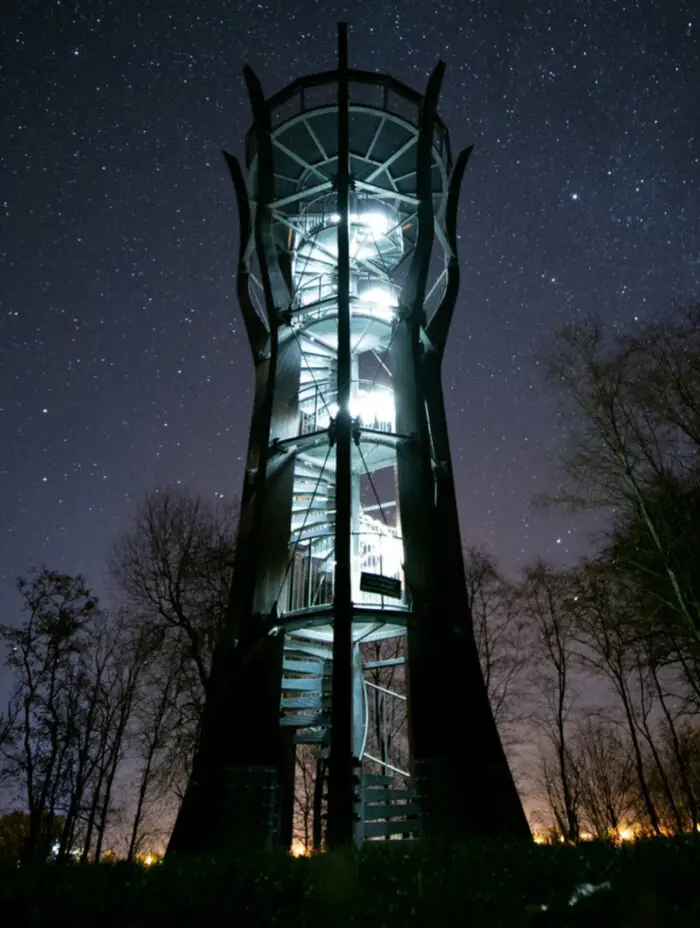
visitsiauliai.lt
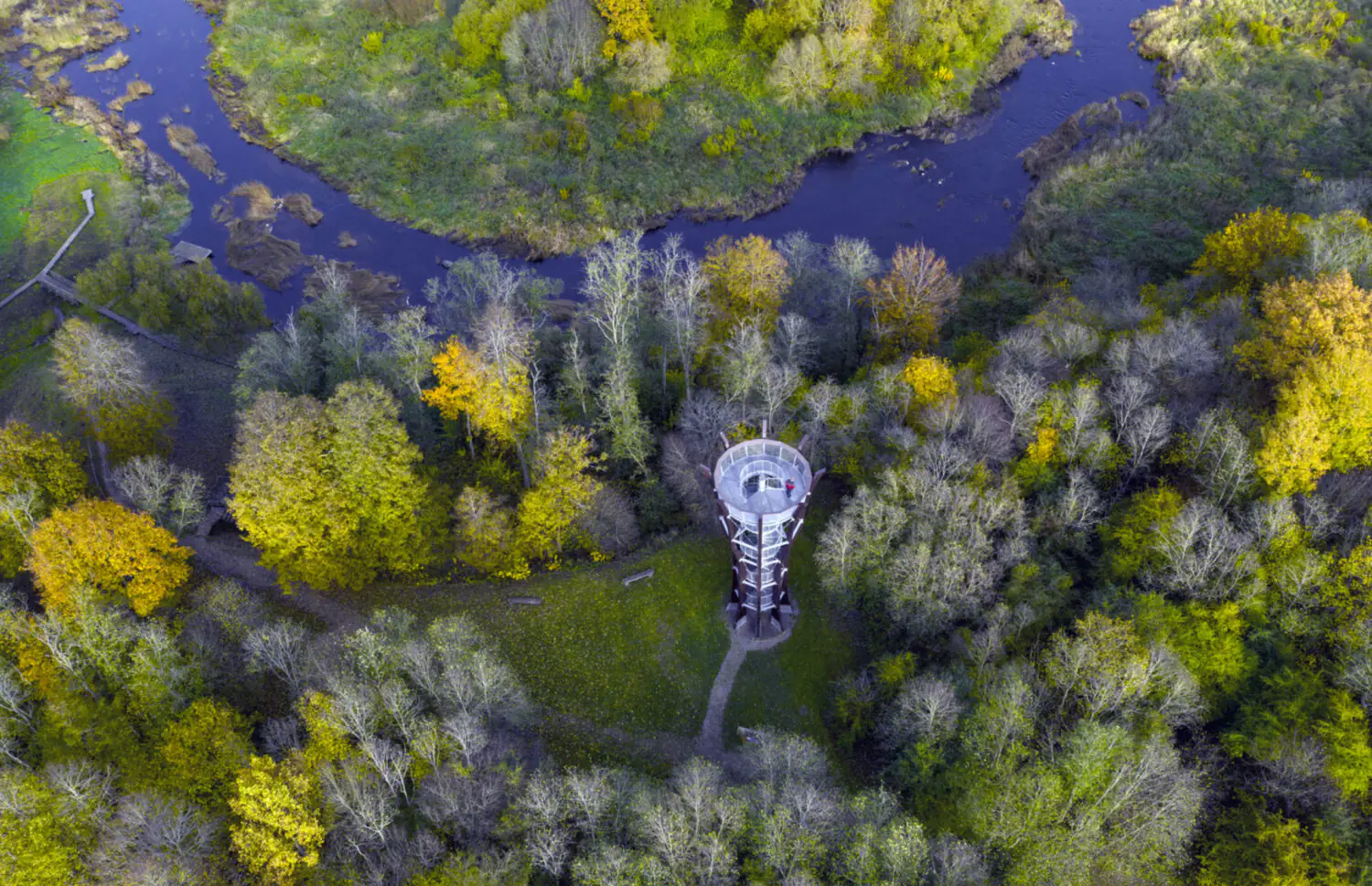
visitsiauliai.lt


